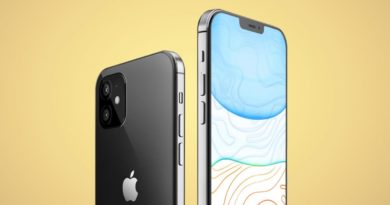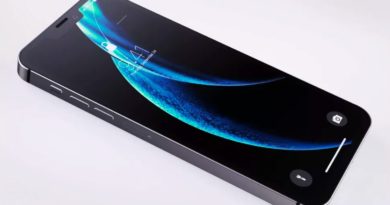What is 5G? The definitive guide to the 5G network rollout
Carriers continue to build out their 5G networks, and the ranks of the best 5G phones that can take advantage of faster speeds continues to grow. Yet, more than a year after the first 5G networks launched in the US, people still struggle to explain just what 5G is.
Part of the blame goes to the hype that we’ve been hearing about 5G for years. 5G’s faster speeds and lower latency were set to usher in an era with blink-of-an-eye downloads, immersive virtual reality experiences and new uses we hadn’t even imagined yet — or so 5G’s advocates kept telling us.
We’re not at that point, though — at least not yet. Yes, if you can get a 5G signal, you’ll see improved performance over LTE (aka 4G) networks. But even with expanding networks — AT&T has just joined T-Mobile in providing nationwide coverage — the 5G experience isn’t all that different from LTE. At least, not yet. And different 5G technologies deliver different speeds, adding to the confusion.
The 5G landscape is constantly shifting and will continue to do so well into next year. Here’s where we are now at the midway point of 2020, and what we can expect from 5G once the new networking standard blankets more of the country with faster speeds and lower latency.
What is 5G?
5G is the fifth generation of wireless communication standards.
First there was 2G, a set of standards governing wireless telephone calls. The mobile web did not yet exist. Then 3G arrived, making it possible to surf the internet on a smartphone. 4G delivered speeds that enabled video streaming and an entire economy of apps that need sustained, reliable connectivity.
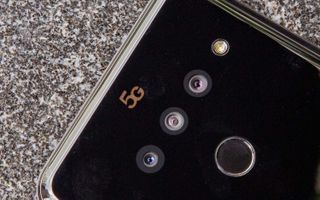
In 2017, the 3rd Generation Partnership Project, the group that creates the rules for wireless connectivity, issued the non-stand-alone standard for 5G, which allows 5G to coexist alongside 4G. In June 2018, the 3GPP finalized the standard for stand-alone 5G. In the two years since, infrastructure developers like Ericsson and Nokia have worked with the four major wireless carriers in the U.S. to build out 5G networks and test them with devices equipped with 5G radios that comply with the new standard.
That means your existing smartphone won’t catch a 5G signal (unless, of course, you bought one of the handful of 5G-ready phones that went on sale last year). The new standard requires a new device. That new device may hit download speeds of 1 Gbps (but only on a high-band 5G network) and theoretically hit a peak of 10 Gbps. That means you’ll be able to download full-length movies in seconds, but it will also open up a world of possibilities we can’t even imagine yet. We’re already seeing 5G phones capable of gigabit speeds in our real-world testing, but it varies by carrier and by city.
5G Coverage: U.S. Cheat Sheet
| AT&T | Verizon | T-Mobile | |
| Current 5G cities | 35 (5G Plus service); 395 (low-band 5G service) | 36 | 7,500 via sub-600Ghz network, with high-speed service in parts of 7 cities |
| Initial 5G technology | Millimeter wave in 5G Plus cities; low-band spectrum elsewhere | Millimeter wave | Millimeter wave in half-a-dozen cities, 600 MHz for nationwide network |
| Required plan | Unlimited Extra ($75/month); Unlimited Elite ($85/month) | Do More or Play More ($80/month) or Get More ($90/month) | Magenta ($70/month) |
| Supported devices | Galaxy S20, S20 Plus and S20 Ultra; Galaxy Note 20 and Note 20 Ultra; LG Velvet; Galaxy A71 5G; LG V60 ThinQ; Galaxy Note 10 Plus 5G | Galaxy S20, S20 Plus and S20 Ultra; Galaxy Note 20 and Note 20 Ultra; Galaxy A715G; Motorola Edge Plus; OnePlus 8; LG V60 ThinQ | Galaxy S20, S20 Plus and S20 Ultra; Galaxy Note 20 and Note 20 Ultra; OnePlus 8; Galaxy A71 5G; Galaxy A51 5G; Galaxy Z Flip 5G; LG V60 ThinQ |
5G technology: How does 5G work?
The backbone of the 5G standard is comprised of low-, mid- and high-band spectrum. 5G networks operate on different frequencies with sub-6 GHz and millimeter-wave (20-60 GHz) at the low and high ends of the spectrum.
Carriers were already using sub-6 spectrum for existing LTE networks, and now they need more of it to build out 5G. Millimeter-wave frequency was previously unused, and the advent of 5G has given carriers access to the spectrum that will enable the faster speeds we expect with the new standard.
But mmWave has a few drawbacks: Because it’s so high-frequency, the waves don’t travel long distances. In fact, they can’t even travel through windows or buildings. That means a device operating on an mmWave-based network, like Verizon, T-Mobile and AT&T’s 5G networks, will need to be extremely close to a 5G node to catch a signal.

That’s fine in a dense metropolitan area, where you can stick a 5G node every few hundred feet. But in rural areas where there are few buildings or cell towers, mmWave won’t work.
That’s why both sub-6 and mmWave are necessary to make 5G widespread and high speed. Indeed, at Qualcomm’s annual developer get-together in December, Qualcomm president Christian Amon said that real 5G will be a combination of the low, mid, and high-band frequencies.
To that end, Sprint had been using its existing midband (2.5 GHz) spectrum to build out its 5G network. At 2.5 GHz, a signal can travel farther but not as fast as with mmWave. We saw that play out in our testing of Sprint’s network, which didn’t deliver the 1 Gbps speeds that mmWave-based networks from its rivals do, but did provide more reliable coverage. Of course, Sprint is now owned by T-Mobile, and at the start of July, T-Mobile deactivated Sprint’s 2.5GHz network in order to incorporate it into its own 5G coverage — a key step in incorporating all parts of 5G into its network.
As for T-Mobile, it started with mmWave in a half-dozen cities, but has since rolled out a nationwide 5G service using low-bad spectrum that can reach 7,500 cities in addition to rural areas. (At the start of August, T-Mobile launched standalone 5G, which improves network performance.) Similarly, AT&T’s 5G Plus relies on mmWave in the 35 cities it’s available in, but the carrier also has a low-band network that has grown to 395 markets covering 205 million people. T-Mobile still has the wider reach, claiming to cover more than 250 million people.
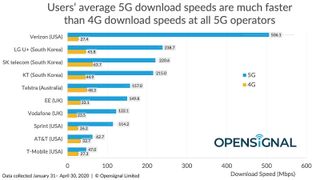
A report by OpenSignal detailing 5G performance from earlier this year illustrates what impact the different 5G technologies can have on networks. Verizon, which has relied exclusively on mmWave in its initial 5G launch, boasts the best speeds by far at 506.1 Mbps. Other carriers are using mid- to low-band 5G, and their average download speeds — 114.2 Mbps for Sprint, 62.7 Mbps for AT&T and 47 Mbps for T-Mobile reflect that.
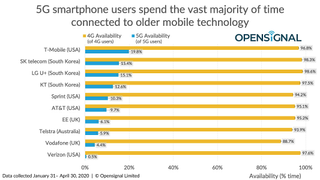
But take a look at 5G availability. The same carriers who have slower speeds because of mid- to low-band-based 5G can boast a wider reach. Verizon and its mmWave-based 5G network has the lowest percentage of availability of all, with users able to get a 5G connection less than 1% of the time.
Rollout: When can I expect 5G?
5G is already here, but unless the stars of your location, the wireless carrier you subscribe to and the smartphone you own are perfectly aligned, you probably can’t use it yet.
AT&T, Verizon, T-Mobile and Sprint have all launched their 5G networks, but there are caveats. First, there are only a handful of 5G-compatible smartphones on the market, though that number is growing with a boom coming in the fall. (More on those in a moment.) Coverage is now reaching wider areas — at least if you’re using AT&T or T-Mobile — though speeds are only moderately faster than 4G for the most part.
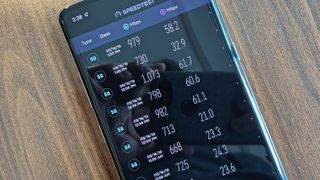
What’s more, it’s evident many smartphone users aren’t sure what 5G is. In fact, one in three Americans think they already have 5G, according to one study. The results showed that 47% of AT&T subscribers who own iPhones think their device is 5G-capable.
Don’t confuse AT&T’s 5G plans with the 5GE logo that appears on AT&T customers’ phones. That logo translates to “5G Evolution,” AT&T’s expanded service with advanced LTE technologies, such as 4X4 MIMO, which doesn’t hit the speeds we expect from 5G (or even match Verizon’s current 4G service, in our testing).
AT&T has stuck with that decision: “We’ve been talking about 5G Evolution for a while now. We were pretty public about what we were doing and what we were deploying,” Igal Elbaz, senior vice president for wireless technology at AT&T, told us at CES 2019.
5G phones
We entered 2020 with half-a-dozen 5G-capable smartphones on the market: Samsung’s Galaxy S10 5G, Note 10 Plus 5G, the OnePlus 7 Pro 5G and OnePlus 7T Pro 5G McLaren, LG’s V50 ThinQ 5G and the Moto Z3 or Moto Z4 with 5G Moto Mod. (The Moto phones require a pricey accessory; it can’t connect to 5G on its own.)
There’s not much reason to buy these handsets now, as more advanced 5G models have hit the market.
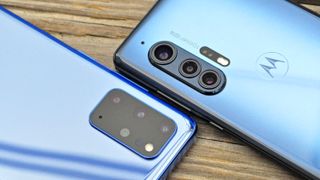
The Galaxy S20, Galaxy S20 Plus and Galaxy S20 Ultra have led the charge this year on 5G phones when they debuted in the spring. The S20 Plus and S20 Ultra can work with any type of 5G network, be it built on mmWave or low- to midband spectrum. (That may be why AT&T has opened up its mmWave-based 5G Plus network to all customers.) For the S20, Verizon offers a special edition — the Galaxy S20 UW — that works with its mmWave-based network.
As for other 5G phones, the LG V60 ThinQ is also available, along with the OnePlus 8 and Motorola Edge Plus. All of these devices are powered by the Snapdragon 865, a 5G-capable processor that debuted at the end of last year. Later this month, the Galaxy Note 20 and Galaxy Note 20 Ultra begin shipping; they feature an even more powerful Snapdragon 865 Plus chipset.

Those phones are all pretty expensive, though — the OnePlus 8 is the cheapest of the bunch at $699. We’re about to see an influx of lower-cost 5G devices that bring the price of higher speeds down even further, thanks to the Snapdragon 765 processor family with its own built-in 5G modem.
The $699 Motorola Edge features a Snapdragon 765, as does the Samsung Galaxy A71 5G, which lowers the price of 5G connectivity to less than $600. OnePlus is going even lower with the OnePlus Nord, a sub-$500 phone (£379, to be exacting) featuring the Snapdragon 765G. That phone isn’t shipping in the US, but the $599 LG Velvet now is, and it’s also powered by a Snapdragon 765G.
You’ll notice Apple hasn’t been mentioned yet. That’s because the company decided to skip 5G connectivity with last fall’s iPhone 11 launch. That’s changing with the iPhone 12, with all four models reportedly featuring 5G connectivity in the fall. That could be the boost 5G needs, even if the cheaper iPhone 12 models may not support higher-speed 5G.
5G beyond phones
People equate the G’s — 2G, 3G, 4G and now 5G — with smartphones, because that’s always been the place where we’ve been able to see an indicator of what kind of connectivity we’re getting. But that’s only part of what 5G is — the faster speeds will mean so much more than just higher-quality streaming and lightning quick downloads.
“5G will be the post-smartphone era,” Robert J. Topol, Intel’s general manager for 5G business and technology, said during an interview at last year’s Mobile World Congress. “Phones are the first place to launch because [they’re] such an anchor in our lives from a connectivity standpoint.”
That’s about to change.
Lower latency will make augmented reality and virtual reality more useful — and eliminate nausea — because there won’t be any lag. AR glasses and VR headsets haven’t yet cracked the mainstream, but tech companies are betting that these devices will eventually replace our smartphones. With 5G, that could actually happen.
“Connected PCs, connected IoT products, connected AR/VR, connected gaming consoles, things like that — we see all of those on the horizon,” said Ryan Sullivan, Sprint’s vice president of product engineering when we spoke to him last December and now a vice president of devices and technology at the new T-Mobile. “They may not all be a 2020 thing, but you start to see some of those new use cases and new product categories emerge.”
To that end, Qualcomm released its XR2 mixed reality processor with 5G connectivity, and at the end of February, unveiled a reference design built around the chip that it says will accelerate development of new mixed reality experiences.
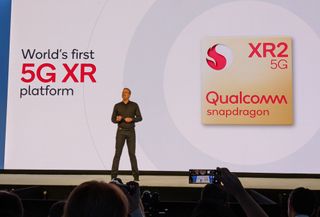
Among the ways 5G could change your life, schools could take advantage of virtual- and augmented-reality experiences that will bring concepts out of textbooks and into real life for students. Faster connectivity and no latency could also revolutionize hospitals, enabling holograph-assisted surgeries. On the roads, 5G could make self-driving cars safer, because communication between vehicles and infrastructure will become instantaneous.
“It’s not just speed and latency, it’s so many other things,” Verizon chief product development officer Nicki Palmer said during the December 2019 Qualcomm tech summit on 5G. “This transition from 4G to 5G is even bigger and frankly much more revolutionary.”
This isn’t going to happen overnight, but expect major shifts thanks to 5G in the next five years. Qualcomm’s Amon predicts that there will be 200 million 5G subscribers by the end of 2020, and that there will be 2.8 billion 5G connections by 2025. (That’s not just phones, but rather connected devices, too. Still, it illustrates just how rapid companies expect the 5G transition to be.)
What will happen to 4G?
Unlike past generations of connectivity, 4G and 5G will coexist. When your device drops a 5G signal, it will fall back on LTE. The hand-off should be imperceptible.
This will be especially useful in areas of the country where 5G networks will take longer to get off the ground.
Existing 4G networks will also play a role in carriers building out their 5G coverage, as technologies like dynamic spectrum sharing will allow carriers to share their spectrum between 4G and 5G uses.
And the improvements carriers are making to their networks to prepare for a nationwide 5G rollout will make 4G better, too. When I tested AT&T’s 5G Plus network in Las Vegas last year, I hit 900 Mbps over 5G. LTE can’t compare, but I clocked over 200 Mbps on an iPhone running on AT&T’s 5G E (advanced LTE) network. That’s exponentially better than AT&T’s existing LTE network, which averaged download speeds of 32.91 Mbps earlier this year.
We’ve got a closer look at how 4G and 5G speeds compare.
The dangers of 5G
There is no evidence to suggest that 5G is dangerous to your health, and yet people are still concerned. Why?
For years, the belief that radio waves can cause brain cancer in humans has spread, seemingly affirmed by a 2000 scientific study of high-frequency waves and their effect on human cell tissue. A recent New York Times report examined that study and found it to be based on a misunderstanding of the human body — specifically, the skin’s ability to shield the brain from radio waves.
Our colleagues at Live Science have also looked into the dangers — or lack thereof — that 5G can pose, and found that while there is no reason to be alarmed about the rollout, more studies will (and should) be conducted as 5G becomes more widespread to determine its impact.
The latest conspiracy theories surrounding 5G have claimed the network technology has somehow triggered the coronavirus pandemic — a dubious assertion that some people have taken seriously enough to set fire to 5G towers in the UK. The health experts we talked to think 5G coronavirus conspiracy claims are nonsense.
5G outlook
5G is here, but so far, it’s a little underwhelming. Still, that should change as more cities come online and more 5G devices become available.
Overall, 2019 had been the year that 5G starts to take off, but 2020 is when next-generation networks will have a meaningful impact on the masses. “2020 will be the year of scale of 5G,” Qualcomm’s Amon promises.
By year’s end, we’ll not only see the first 5G iPhone, we also expect most wireless networks to offer nationwide coverage. That’s when we’ll begin to see the full potential of 5G.
